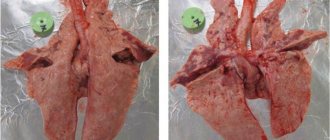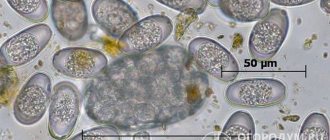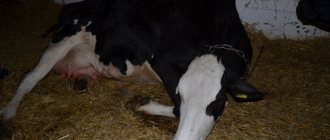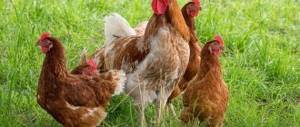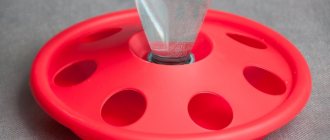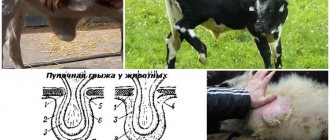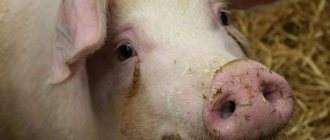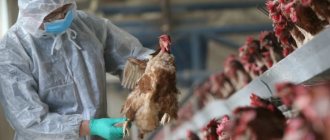Improper keeping of birds
The lack of suitable living conditions can affect not only the health of the chicks, but also their behavior.
Very often, the reason that chickens peck at each other is due to errors in their keeping: Crowding in the chickens’ habitats
If the chicks are kept in a cramped coop, box or box, then pecking will become a natural way for them to expand their habitat by killing their fellows
First, the babies will begin to pluck each other's tails, and then they can move on to serious fights, with fatal consequences for weak individuals, so it is very important to give the chickens enough space to live
Sometimes it happens that chicks peck at each other in a limited free-range area. The reason for this may lie in the lack of greenery on the site - this is how birds solve the problem of lack of food - they get rid of unnecessary contenders for fresh grass.
Errors in lighting the chicken coop
A balanced day length throughout the year is very important for good chicken productivity. For example, laying hens need good lighting during the laying period. However, too powerful lamps with bright light can harm birds - they become more aggressive and may start fighting. It is necessary to strictly follow the lighting rules and choose lamps that emit a soft glow. Experienced farmers advise distributing several low-power sources with bluish light throughout the chicken coop in order to get as close as possible to the natural environment.
Dry air in poultry housing
Veterinarians strictly set the humidity parameters in the chicken coop, recommended for raising chicks from the first days. If these indicators are greatly underestimated, which often happens when artificial heating is turned on, then the chicken will begin to suffer - the skin will dry and peel, feathers will begin to fall out. This can lead to dermatological diseases of the young chicken.
To correct the situation on their own, babies press their beaks on the coccygeal gland, releasing lubricant. This arouses interest among other individuals and leads to the fact that the chickens begin to peck at the place where the unfortunate person secretes fluid. After the blood appears, all the chicks join the hunt. This aggressive behavior of relatives often leads to the death of the victim.
If the conditions for keeping the birds are normal and meet the recommended standards, then you should look for other reasons why the chickens are pecking each other until they bleed.
Possible causes of chick pecking
If yesterday everything was fine in the chicken coop and there were no signs of trouble, but the next morning there is a very unpleasant picture of the birds pecking each other until they bleed, this is the first bell. It is not completely known why young animals suffer from cannibalism among their own, but this can lead to disastrous consequences: you will simply have to destroy the entire young generation.
To understand the problem of why chickens peck at each other, you need to find out the reason or several reasons why the birds behave this way. Here are some of them:
- Improper diet, lack of necessary vitamins and microelements.
- Poor lighting.
- Birds are crowded.
- The conditions of detention do not correspond.
It is worth considering each of the reasons in more detail. Incorrect diet, bait, formula - some of this may not be suitable for babies, or they lack calcium, various minerals, and vitamins.
By maintaining a balanced diet, you can prevent feather and body pecking. The problem may be in complementary foods and grains. If the latter are large, then when they eat them, the birds do not feel full for a long time and begin to peck at each other, engaging in cannibalism. This is a problem with plant feed, not loose mixture.
Options
The following types of pecking are observed:
fingers (pterophagia): occurs in young animals that struggle for food (if there is a shortage)
By striking the legs, physically strong specimens drive their fellows away from food; heads: accompanies the process of hierarchization in the herd; coccyx, cloaca: the result of dietary restrictions in chickens or hormonal imbalance in young laying hens, when they lay eggs of such a size that the oviduct is damaged and attracts the attention of fellow birds; back, wings; comb, earrings: occurs mainly among adult representatives, associated with the establishment of hierarchy in the herd. The reason is the appearance of bloody droplets after smallpox injections; feather plucking: the result of improper nutrition during the change from down to feathers, the presence of insects.
- Identifying the causes of the problem is half the battle. There is very little left to do. If the problem is improper feeding of chickens, you need to add to the diet what they eat: chalk, ground fish bones, salt, vitamins, cabbage leaves, carrots, microelements in preparations, green young grass.
- When the chicks are crowded, broilers beat their tails, peck at the cloaca, pluck and peck each other. It is enough to prevent the “relocation” of fighters from place to place and expand the space in the enclosure or chicken coop. Chickens should have free access to feeders, and it is better to let them out for a walk in the fresh air. So the problem of crowding may not arise.
- Replace lighting if this is the reason. Either make the lighting not very bright, so as not to provoke aggression, or replace it with calm shades. The chickens will not see each other well and will not respond to the stimulus in order to avoid a stressful situation. Reddish light can also be a way out of this situation. The main thing is that other chickens do not see drops of blood and open wounds on their brothers do not bring their beaks closer to them. Thanks to the red color, they will not be able to distinguish and see these wounds.
We suggest you read: What to do if your chinchilla has eye problems
If there are fighters, then you need to monitor them and transplant them into another enclosure or simply separately from the main brood, otherwise the weaker individuals will simply be pecked. And treating an infected bird for infection and virus, which can easily and quickly manifest, will take much longer and be more problematic.
Types of pecking and causes
From the fact that much healthier chicks peck the weaker ones, you can quickly understand what is wrong in the chicken coop.
Place of pecking and possible causes:
- Fingers. Juveniles peck at their toes when they are poorly fed. By injuring their legs, strong chicks deprive the weak of the opportunity to get to food. This process is called pterophagy.
- Head. If they peck in this place, the process of establishing leaders in the flock is probably underway.
- Ass, tailbone, cloaca and tail. Most often this is a sign of hormonal problems in chickens.
- Comb, earrings, wings, back. Usually manifested in adult chickens - installation of flock leaders.
Blood should not be allowed to appear on the body of the chicks. The red dots cause increasing aggression, after which they peck this method from each other until they are wounded. Drops of blood may appear after smallpox injections.
Treatment of sick individuals
A pecked laying hen does not necessarily go straight to slaughter. A young bird that lays eggs is treated, taking into account a number of recommendations.
First aid
First of all, the chicken must be separated from the flock. She must be placed in a single cage or released into the wild until the wounds heal and become covered with feathers.
Treatment of wounds
Wounds must be treated with an antiseptic. Peroxide, brilliant green or vodka are suitable for this.
Be sure to read:
What internal and external (skin) parasites look like in chickens, symptoms and treatment
Bird care
Further care consists of regular wound treatment and monitoring of the general condition. If the chicken stops taking food and becomes lethargic, this indicates an infection.
How to prevent chickens from pecking
Housing conditions also play an important role in the development of winged birds. This should come first before getting birds. No matter how strange it may be, chickens also need a properly humidified room.
Without this, chickens will suffer from dry skin, lack of moisture in the body, and dehydration. And all this will lead to a thickening of the shell, the release of fatty eggs, and as a result - eggs without a shell in a soft film. Since all of the above phenomena are obvious irritants, aggression towards other chickens begins to appear, pecking feathers and tissues until they bleed.
If the birds are kept in enclosures and the feeder is too small to feed them all at once, you should think about increasing it. It's a simple hierarchy: the strongest will eat first, and the weak will eat what's left.
How does the condition manifest?
Broiler chickens are the most aggressive among other types of chickens - the chicks fight actively, pecking at their paws and cloaca. When the first drops of blood appear, the entire flock attacks the chicken and it is almost impossible to save it. Increased aggression first affects the strongest chicks, then gradually covers all birds.
Pecking in chickens, or pterophagy, is a special designation for this phenomenon by veterinarians. There is still no consensus on whether this is a disease or a condition. The habit of pecking, established in the chick at the beginning of development, persists into adulthood.
Veterinarians have identified the main factors of aggressive behavior of chickens:
- unbalanced diet;
- violation of conditions of detention.
There are additional factors that provoke increased aggression, but they only complement the main ones.
It has been noticed by practicing poultry farmers that broilers are particularly aggressive; the severity of their reaction increases as new crosses are bred (both meat and egg varieties). Why is this happening?
This is explained by the constant overstrain of the cross-breeds’ body due to the very rapid, constant growth process and the body’s increased need for microelements and vitamins supplied with food. Birds of these breeds are highly active and prone to increased reaction to changes in living conditions.
Observations of the breeds revealed a calmer character of brown chickens compared to white individuals, universal crosses are more prone to outbursts of rage, and cockerels are less irritable than hens.
Additional reasons for aggression:
- increasing the herd, including at the expense of individuals of other breeds;
- a large number of cockerels and livestock;
- stuffiness in the room;
- sudden changes in external temperature;
- errors in keeping the flock (dead chickens remain among the living and peck);
- individuals with bleeding and wounds remain in the herd;
- infection of the herd with parasites.
By observing how birds peck at each other, you can determine the approximate cause of the disturbance in their condition and what to do to correct the situation:
- pecking of fingers in young individuals - chickens feel the need for food;
- cockerels peck each other until their heads bleed - the order of the strong and weak in the flock is determined;
- in adult birds, fights with comb tearing out occur during the struggle to seize power in the community;
- chickens tear out feathers, are restless and aggressive - the flock is disturbed by insects, the feed lacks substances in the process of replacing down;
- Cloaca pecking in laying broilers is caused by their tendency to lay too large eggs, which damage the oviduct and cloaca, which attracts aggression from other hens;
- If the cloaca is damaged in young chicks, the quality of the food should be monitored.
Strong individuals try to push aside weaker ones, peck fingers and pluck each other's feathers. If damage and bleeding wounds appear on the back and wings of the chicks, this will certainly cause aggression in the herd, which will try to destroy the hungry and weak.
If the population is very crowded, weak and timid chicks can only be saved by removing them from the main herd.
The habit of pecking and fighting, established before the age of 30 days, remains in chickens until the end of the individual’s life and cannot be corrected. To prevent pecking in the future, birds with aggressive behavior should be eliminated from the flock.
Feeding
Make changes to your pets' diet. If the cause of abnormal behavior is electrolytic and acid-base imbalance, then adding table salt to the combined feed will help (for 4-5 days, two percent of the feed weight). This normalizes sodium levels in the body and balances osmotic pressure. Another element that chickens lack is calcium. It affects intracellular processes and is responsible for the synthesis of enzymes.
Poultry farmers recommend adding food that contains protein to the diet: boiling and grinding processed fish and meat products in a meat grinder (not earlier than the 11th day of life). 30-day-old chicks are given peas ground in a meat grinder, which are pre-soaked. The coop population loves to rummage in the litter or soil, so when conditions are favorable, release them into the wild. Give them pieces of carrots, cabbage, and beets for the cattle.
Cannibalism and feed sulfur win. Added at the tip of the knife per kilogram of feed. It is recommended to dilute it with flour. It is recommended to add apple vinegar to the water (three tablespoons per liter). Sulfur and calcium are contained in gypsum. Make sure that the feed does not contain mycotoxins, which negatively affect the absorption of nutrients.
Experts advise giving birds functional feed additives consisting of vitamins and minerals. They are used to treat or prevent pecking. Such complexes additionally reduce aggression in the inhabitants of the chicken coop and normalize metabolism. The drugs “Movisel” and “Raskleva.NET” help. Fish oil and bone meal also have a positive effect.
A nutritious diet is the best prevention of pecking
What to do?
Having looked at the main causes of pecking among chickens, here are tips that will help reduce their aggression. If the reason lies in unbalanced feeding, it is worth reconsidering the quality of the poultry diet. You can add table salt to mash and mixed feed, but not more than 2% of the total volume. The bird must receive sufficient amounts of sodium, calcium, phosphorus, magnesium, selenium, and other vital minerals. Feed must be enriched with vitamins. Calcium and sulfur are contained in gypsum.
Starting from the sixth day, you can give chickens fermented milk products: yogurt, low-fat cottage cheese of medium acidity, skim milk. Add crushed chalk, shellfish, and charcoal to your food. Food should contain meat and bone meal, ground bones, and fish remains. The diet of one-month-old chickens should include ground, pre-soaked peas.
Advice! The chicken loves to dig into the litter and soil, so in the warm season, take the chicks out for a walk more often, scattering fresh vegetables on the surface of the ground - carrots, lettuce, cabbage, beets.
You can reduce the number of cases of pecking by adding baking soda and abrasives to your food. For 1 kg of feed, it is enough on the tip of a knife. You can add a small amount of apple cider vinegar to drinking water (3 tbsp per 1 liter).
In the spring, release the chickens into fresh air. Chicks love to dig in the grass and litter
Experts and experienced poultry farmers advise giving birds functional feed additives that have a balanced composition of macro- and microelements and vitamins. They are used for treatment and prevention of pecking. Mineral and vitamin complexes additionally reduce aggression in adult chickens and young animals, and normalize metabolic processes in the body. The following drugs help well: “Movisel”, “Raskleva.NET”. Chicks can also be given fish oil, bone meal, fresh herbs, and vegetables.
It is also worth noting that you should not suddenly change your usual diet. This can cause stress in the bird, changes in behavior, and unnecessary aggression.
Improving conditions of detention
Having noticed the most aggressive individuals, hostile towards their relatives, it is necessary to divide the chicken flock into two or more groups. Place dominant representatives as far as possible from weak, timid chicks.
If you notice an injured chicken, if the chick has injuries on its back, the wound is treated with hydrogen peroxide. You can also treat the wounds with wood tar, potassium permanganate, and streptocide. Birds will not attack individuals that do not have visible injuries, bleeding wounds, or red spots on the body. Therapeutic therapy for injuries to the skin of poultry should be comprehensive and systematic. Feed mixed with sulfur and citric acid can be added to the diet of individuals affected by pecking.
Wounds need to be treated with antiseptic agents
Give the bird plenty of free space. Arrange the chicken coop properly, think about the lighting and ventilation system. Constantly monitor the temperature and humidity in the rooms where the birds are kept.
Important! For one chicken up to 22 days you need to allocate 120 cm2, up to 10 weeks - 200 cm2 and 330 cm2 - up to 17 weeks. If birds go outside, release the flock into grassy areas.
If chickens show aggression, constantly fight, peck at each other, in some cases changing the lighting helps. Only turn on the light when eating. Constant lighting can be left when the cases of pecking disappear.
Video “Feeding for chickens: I’ll peck at you!”
In the video presented by the channel In the Garden or in the Vegetable Garden, a specialist shares secrets on how to prevent pecking among birds using special feeding.
Find out more
Why do chickens peck eggs and their relatives?
Why do chickens fall on their feet and what can you do about it?
Cannibalism among chickens: how to solve the problem?
Pecking in birds is a deviation in behavior that occurs as a reaction to unfavorable external conditions. Pecking can occur not only in adult chickens, but also in chickens.
Usually, the weakest individual becomes the victim of pecking, while at the same time, aggression from one attacking bird can quickly be transmitted to the rest of the birds, which leads to a massive attack on the victim. Pecking often leads to significant injuries, bloody wounds, damage to internal organs and even death.
If measures are not taken in a timely manner, you can lose a significant part of the livestock. Today we’ll talk about what can provoke such abnormal behavior in young animals, and what measures will help eliminate it.
In poultry farming, the aggressive behavior of chickens, in which they pluck feathers and peck each other until they bleed, is called pterophagy. In the vast majority of cases, pecking does not occur on its own; such aggressive behavior always has a root cause.
Various unfavorable factors can provoke aggression among chickens, ranging from lighting in the poultry house to parasitic diseases. Only in rare cases does pecking appear as a characteristic of a chicken independent of external circumstances.
Video: pecking in chickens If the tendency to pecking appears at a very early age, it usually only gets worse over time. Such chickens are culled early.
Poor nutrition
This is usually the main cause of pterophagy and cannibalism in birds. This factor is especially relevant for chickens, whose bodies are actively growing and need adequate nutrition. Analyze what you feed your birds. If you make your own mash, there is a high chance that the chickens are not getting enough vitamins or minerals.
Calcium is especially important for chickens, which is used to build the skeleton. Protein deficiency should also not be allowed. A lack of nutrients can occur with a poor amount of animal products in the diet. If you feed young animals with whole grains rather than crushed grains, pecking may also occur, because the assimilation and digestion of whole grains is somewhat slower and worse.
Errors in lighting
The second most common cause of pecking. Not only the mood and behavior of the bird, but also its appetite, growth, and, in the future, productivity depend on the amount of light. Although small chickens need a lot of light, its brightness must be adjusted.
Excessively bright light causes increased excitability in birds, causing a feeling of fear and anxiety, as a result, the level of aggressiveness increases.
Crowding
When housing is crowded, the microclimate of the poultry house is disrupted. At the same time, an increase in anxiety, excitability, and aggression is also observed. Chicks may not have adequate access to feeders and waterers or sufficient space to move around. Pterophagia can also occur when birds do not have the opportunity to walk, especially for active, active, inquisitive breeds that are in dire need of physical activity.
Other reasons
Nutrition, lighting and crowding are not the only reasons for pecking. Indeed, in fact, any change in living conditions that causes stress in chickens can cause aggressive behavior.
So, the following factors can provoke pecking:
- changes in diet, sudden change of feed;
- introducing new chickens into an already formed flock;
- a large number of cockerels in the flock, which are more aggressive by nature;
- violations of the temperature regime of detention (this also includes problems with heating and the difference between night and day temperatures);
- infection with skin parasites (ticks, fleas, lice);
- problems with the ventilation system, resulting in a dusty poultry house;
- technical work in the chicken coop;
- constant noise over 60 dB;
- chicken character traits, genetic predisposition.
Reasons for the development of cannibalism in chickens
There may be several reasons for this behavior of chickens kept in a household. Many of them occur due to violation of maintenance rules, improper care and errors in the preparation of the diet. A bird that feels uncomfortable is stressed, nervous, and thus tries to relieve it.
Cannibalism in chickens can occur for the following reasons:
- Inadequate and unbalanced feeding. Chickens, like other poultry kept in a household, need food that contains all the nutrients they need. They especially need protein and calcium, the need for which increases during the period of molting or egg-laying. If chickens for some reason do not receive them in the required amount, they begin to compensate for the deficiency in a way available to them. First, they peck out feathers from weaker relatives, and when blood appears at the site of the wounds, they begin to peck them further. If victims do not resist, they can be pecked to death.
- Excess protein feed can also cause pecking. If the protein content in the feed is increased, this can lead to acidosis, irritation of the mucous membranes and the formation of cracks in them, which will ultimately lead to pterophagy.
- Chickens can learn cannibalism if they are given meat and sausage scraps. So to speak, having felt the taste of meat, they then begin to attack their relatives.
- The lack of salt or water, which birds try to make up for in this way.
- Keeping them in close quarters can also cause chickens to pluck each other's feathers. If the poultry house is too small for the number of chickens that live in it, then they also experience stress from this and begin to fight and peck at each other. This is especially pronounced in winter, when chickens do not go out for walks, move little, sit in the dark and often in the cold, which greatly depresses them.
- The lighting is too bright. If there is a lot of light or the lighting is prolonged, the birds become aware of the slightest damage on each other’s body, and they begin to peck at them.
- Other errors in maintenance: low humidity, excessively low or, conversely, high air temperature, insufficient number of feeders or drinkers, which is why chickens begin to fight with each other for food or water.
- Keeping chickens of different breeds together, with different plumage colors or different ages. In this case, light-colored chickens do not respond appropriately to dark-colored chickens. It may be the other way around.
In addition, the reasons that chickens peck each other until they bleed may not be related to illiterate management; it may have to do with the temperament of the bird itself. If an individual is aggressive and pugnacious in nature and pecks at its relatives just like that, for no reason, then most likely it will do this constantly. Similar tendencies can be noticed already in young animals, when broilers or small chickens begin to peck each other until they bleed. Growing up, such individuals do not give up their bad habit. Therefore, all that remains to be done in this case is to remove such a bird from the rest of the population and raise it separately.
Also, the cause of cannibalism is often the addition of new individuals to the poultry house. Poultry farmers have long noticed that old chickens peck young ones that are placed next to them. In this way they try to establish hierarchical relationships, which is quite understandable by natural instincts. It may even get to the point where new birds are pecked to death. It may also happen that laying hens are attacked during the laying period. In this case, other chickens begin to peck at the area near the tail if it is damaged.
Methods for solving the problem
In order to understand why chickens peck each other and what to do, it is necessary to accurately identify the cause of the behavioral disorder. You can only fix a problem if you know why it occurred.
Maintenance measures
Housing conditions are very important to prevent pecking problems. Chickens should be divided into 2 groups. The first should contain dominant chicks with a more aggressive character; in the second there will be calm, peace-loving birds.
Providing quality lighting is also essential when raising chickens. When pecking, it is best to use infrared lamps, which give the young animals warmth and calm them down. In addition, the red light will not allow others to see its blood if one of the chicks is injured.
It is impossible to plant young animals of different ages, since the older ones will be aggressive towards the younger ones, not allowing them to water and food and actively pecking them. Chicks can only be combined when the youngest bird is 3 months old.
The area where chickens are kept must be sufficient so that each chick can easily approach the feeder and drinker.
Feeding
In order for the chickens to be fed adequately and not have a desire to peck, from the 6th day of life meat and bone or fish meal should be introduced into the chickens’ diet.
They can also be replaced with a phytocalcivit premix intended for dogs. Its cost is higher, but its use can be called the best, since the drug contains not only minerals, but also a full complex of all necessary vitamins.
Chickens must have constant access to dry food (crushed grain) and clean water. By the hour, they are given only wet food, which, if left in the cage for a long time, will spoil if not eaten.
De-bocking
This procedure is carried out in poultry farms, when it is not possible to ensure high-quality control of the condition of each chicken.
The essence of the action is to circumcise the tip of the beak of a day-old chick without affecting its living tissues. When performed correctly, the procedure is painless, and after a month the beak is completely restored.
The tip is trimmed using a special device with very thin blades heated to a high temperature, which ensures sterility.
A more modern method is laser trimming, which is carried out in the incubator. At home, pruning is not carried out.
Rules for raising chickens and broilers
Raising broilers and regular chickens is slightly different, as they have opposing goals. Broilers are bred for meat, so the main goal is to grow meat; when breeding chickens, it is to produce eggs.
It is important to provide them with excellent living conditions. Rearing begins with raising chickens. At first, they should be kept in a room where the temperature does not fall below +30°C, with round-the-clock lighting provided. After 2 weeks, the babies will get stronger and can gradually get used to normal conditions. Closer to one month of age, they will be fully formed. The room where chickens are kept must be regularly ventilated, since the peculiarity of meat breeds is low mobility, which leads to the rapid development of infections.
Chickens peck each other until they bleed
When raising broilers, two housing methods can be used: floor and cage.
For your information. It is important to keep the chicken coop clean and tidy.
Cell method
Growing in cages will be an ideal solution for broilers in the country. It is convenient even in sanitary and hygienic terms. If one bird is infected with an infection, it will not necessarily spread to the rest.
Important! Broilers are pragmatic birds that do not need a lot of space. They thrive in small cages and coops.
When kept in cages, the following standards must be observed for each square meter:
- no more than 18 chickens;
- no more than 9 adult chickens.
Floor content
The method is almost the same for regular chickens and broilers. The difference lies in the temperature regime.
Laying hens are more tolerant of temperature changes, while broilers react very strongly to this (the temperature should be 28-35 degrees). In the first and second cases, the humidity is maintained at 70%. Meat breeds don’t really need walks, but chickens need to be in the fresh air regularly.
Interesting fact. If a chicken gets sick, it must be isolated. There are a lot of contagious diseases that can affect others.
In the room where birds will be kept, it is recommended to sprinkle the floor with lime. You will need 1 kg per square. A layer of sawdust and straw is laid on top. It changes regularly.
Nutrition
For broilers, it is important to provide balanced, nutritious nutrition; this is the only way to increase the required meat mass in a short period of time (the growing period is 50-70 days). Fattening begins from the first days of life. From the very beginning, the feeders are filled with crushed boiled eggs and millet, gradually adding green food. From the 5th day they begin to give vitamins, chalk and crushed pebbles are mixed into the food. If you organize your diet correctly, then after 8 weeks the bird will gain up to 1.5 kg. Grown-up broilers are fed with compound feed.
Important! Birds can be given food scraps, but it is important to ensure that they do not turn sour, as this will cause health problems.
The nutrition of laying chickens does not differ from the diet of broilers, since young babies need to strengthen their immunity as much as possible and provide it with nutrients.
To raise chickens, nutrition must be organized in such a way as to increase productivity, i.e. egg production. To do this, adults are fed 3-4 times a day at regular intervals. The chickens' diet can be diversified with mixed feed, dung, and grain. To obtain the maximum number of eggs from each head, mineral feed must be present in the diet.
Important to remember! Whatever type of chicken is raised, water must be available to them around the clock.
It's easier to chop off the chicken. . . beak?
In industrial farms, as a “prevention of pecking”, a common operation is to trim the tip of the beak of birds at an early age - debeaking.
This is done using a special electrical device: the tip of the beak is cut off with hot knives of various sizes.
This method is painful and does not eliminate the causes of chicken aggressiveness, does not correct their behavior, but only cuts off the sharp tip of the beak and saves poultry farm owners from losses and troubles. Now broilers can be raised more densely, and egg production in crosses can be stimulated with bright lighting.
In many European countries, such inhumane treatment of birds is officially prohibited.
Clinical signs
Many poultry farmers consider the main reason for cannibalism in domestic chickens to be a lack of protein in the feed. In addition, a large number of livestock per square meter of pen, lack of green food, and low humidity can lead to pecking. You can avoid aggressive behavior of chickens by carefully observing the behavior of the birds in the pen and highlighting the following signs:
- Lack of down and feathers in the pen during the change of plumage in young animals.
- A chicken prone to cannibalism becomes nervous and pecks not only its flock mates, but also everyone around it.
- The laying hen begins to peck eggs (its own and others), gradually switching to its weaker neighbors.
- Frequent fights between young roosters, accompanied by injuries, provoke pecking. In this case, even chickens attack the victim.
Did you know? Cannibal roosters do not attack chickens. Chickens are capable of inflicting wounds on both sexes.
If pterophagy has developed quite strongly, then the picture that the owner can observe does not look the most pleasant. How bad everything is will be determined by the size of the wounds, the location of the pecks and the freshness of the skin injuries. Young animals most often begin to pull out each other's tail feathers, move to the cervical region, and affect the limbs in the toe area. Once the chickens see blood, it will be very difficult to stop them, and therefore an injured individual is most likely doomed to death.
In birds with pecking, severe damage to the skin is observed; internal organs and mucous membranes become pale in color, which is associated with large blood loss.
Food contaminated with mold fungi can lead to allergies in birds, and then the birds will peck at themselves.
Changing the conditions of detention
Broilers are capricious, so it is necessary to follow some rules for their maintenance. First of all, there should be no drafts in the poultry house, and the temperature should be at least 20-22 degrees Celsius.
There should be no prolonged lighting in the room where young animals live - it is better if for every 3 hours of light there is darkness in the room. Too much light can cause them to become aggressive.
In bright light and large crowds, the chicks see the parasites on the skin of their neighbors too well and begin to peck them out, while scratching the skin of the chicks.
To prevent pecking in broilers and other chickens, it is recommended to install red light lamps in the chicken coop, turning on the light only during feeding or cleaning the room.
It is also recommended to paint the glass in the coop a dark color to reduce daylight exposure. In this case, the chickens will not be able to accurately peck other individuals and will not see fresh blood or scratches on them. After the chickens stop pecking in the flock, the lighting in the poultry house can be restored.
It is also important to monitor the humidity in the coop. If it is too high, the birds become aggressive and irritable, they can nip and crush weaker ones.
It is important to keep the coop clean and dry. Constantly change the bedding and ensure ventilation of the room - this is very important for inactive broilers. It is advisable to keep birds on permanent bedding containing bacteria to improve the health of the young and make cleaning easier.
You also need to control the number of birds in the chicken coop. Birds should not be allowed to crush each other in close quarters. When kept in a cramped space, chickens will remain aggressive and will not stop pecking.
Why do chickens peck each other?
The reasons for inappropriate and aggressive behavior in birds are directly related to the living conditions, diet and problems in the relationships of poultry.
Room illumination
Too bright light in a poultry house can cause nervousness and increase aggressiveness in chickens. Since they can easily notice blood, birds begin to peck at these very places.
Crowding
Chickens can become more aggressive if they don't have enough space. This is especially true for birds that constantly stay indoors, without proper comfortable conditions. Pecking also begins due to competition and struggle for food.
Breed incompatibility
Experienced farmers note that cannibalism occurs more often in laying hens than in meat breeds. Therefore, it is impossible to keep them in the same house, otherwise hostility will begin. You should not introduce new hens one by one - the females can immediately peck at the “new one”.
Dry air
Birds often peck at their relatives due to excessively dry air in the room. Due to dryness and dust, parasites appear on the body of chickens, which lead to irritability and nervousness.
Drastic environmental changes
Regular changes in environment cause stress and aggression in birds. In addition, during the cold period of the year there is a need for plumage growth. Due to a lack of vitamins and elements, birds may begin to peck each other.
Nutrition
Birds often peck at their relatives due to poor nutrition, as well as a lack of drinkers and feeders. If the content of microelements in food is insufficient, strong individuals can kill weaker representatives to death.
Microclimate in the chicken coop
It is important to ensure that the balance of temperature and other indicators is maintained in the poultry house. Due to dryness, the feather becomes brittle, irritation of the mucous membranes occurs, and chickens experience nervousness.
It is also necessary to eliminate drafts.
Ectoparasites
The cause of cannibalism can be infection with ectoparasites: ticks, fleas and lice. To get rid of them, chickens begin to peck at the inflamed area of the cloaca, pull out feathers, and damage the mucous membrane under the tail.
Pecking in broilers by type and how to fix it
Based on how pecking occurs in broilers and other chickens, experienced poultry farmers can determine the approximate reasons why this happens and what needs to be done to correct the situation:
- If the young animals have pecked fingers, the chickens do not have enough food;
- cockerels strive to peck each other's heads - males fight to establish the strongest in the flock;
- adult individuals tear out each other's combs - they are trying to seize power in the flock;
- if the chicks tear out each other’s feathers, are restless and become aggressive, the flock has developed helminths, and the daily menu contains too few useful substances during the period when the chicks’ down is replaced by feathers;
- The cloaca of laying broilers is pecked because their eggs are too large and when passing through the oviduct they damage it and the cloaca. And blood on the cloaca attracts aggressive birds;
- if the cloaca is damaged in young animals, then you need to pay attention to whether the chicken feed is sufficiently balanced.
A stronger bird always tries to push the weaker ones away from feeders and drinkers, peck at limbs or pluck out wings. If the chicks have wounds on their bodies? This will definitely become a reason for aggressive behavior of other representatives of the herd. They will definitely peck the weak.
If the standards for keeping poultry in the chicken coop are not met, then weak chickens are saved in cramped conditions only if they are placed separately in time.
If chickens are not weaned from the habit of pecking and fighting before the age of one month, then they will do this until their death; it is not possible to correct this behavior. To prevent pecking in broiler chickens from happening again in the flock, aggressive individuals should be removed from the flock in a timely manner.
Next - about correcting the situation.
In order to quickly try to regulate the pecking situation, you must first resolve the main issue - the regulation of nutrition.
